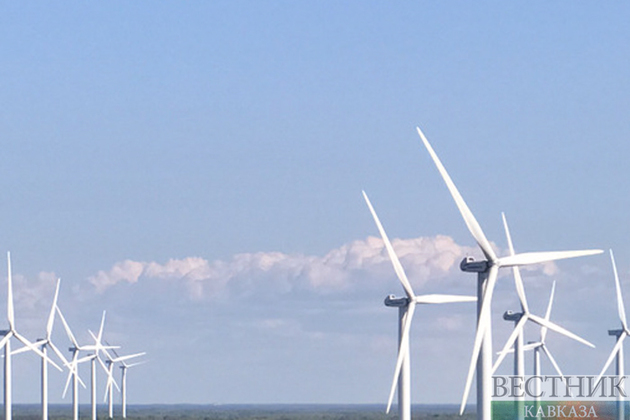Azerbaijan has announced a partnership with UAE-based developer Masdar for 1 GW each of solar and onshore wind, with 2 GW on integrated offshore wind plus green hydrogen production – marking the first offshore wind in the Caspian Sea. This first 4 GW can potentially scale to 10 GW.
This Masdar-Azerbaijan agreement also covers “measures to study and strengthen the network and implement processes for the export of electricity, analyst of the UK think tank Rethink Technology Research Andries Wantenaar writes.
The most interesting aspect of this Azerbaijan deal is the green hydrogen production in a country which is a mid-ranking gas exporter economically and geographically close to gigantic gas exporter Russia – surely one of the last places to finally ditch natural gas in the coming decades. Other fossil fuel exporting countries such as the Gulf States and Russia itself have been slack with their renewables development, but Azerbaijan’s output is smaller, and its rising domestic demand has seen it import gas from Russia in order to maintain its westward exports.
One of Masdar’s Azeri partners is the State Oil Company of the Azerbaijan Republic (SOCAR), which in 2021 signed a co-operation agreement with Technip Energies concerning a floating offshore wind pilot project.
Azerbaijan’s Energy Minister Parviz Shahbazov explained, “These 4,000 MW solar, wind and green hydrogen projects provide ample opportunities for the development of Azerbaijan as a green growth country, green energy producer and exporter, as well as allow for involving multibillion-dollar green investment.” Azerbaijan has received some European finance for its renewables already – $51 million for the 230 MW Garadagh Solar plant from the European Bank for Reconstruction and Development.
The UAE’s Masdar and Saudi Arabia’s ACWA Power have played leading roles in agreements throughout the region, stretching as far as Uzbekistan and Kazakhstan, with Masdar having a target of 50 GW of renewable capacity by 2030. ACWA Power is behind a $300 million wind farm mentioned by President Ilham Aliyev in remarks delivered in February, during which the country’s new hydropower projects also merited mention – including a project which due to location requires Iran’s co-operation.
The green hydrogen segment of the Azerbaijan deal serves as a reminder of the 30 GW of green hydrogen powered by 45 GW of renewables proposed in Kazakhstan by Svevind, which entered an MoU with Kazakh Invest National Company a year ago. Svevind stated it expected a development timeframe of three to five years, and in December it signed a contract with ILF Consulting Engineers and Roland Berger concerning a Concept Design Study for its then 20 GW, 2-million-ton green hydrogen complex vision. Azerbaijan’s offshore wind will take longer than Kazakhstan’s onshore renewables but could surely be built by 2030.
Doubtless motivated by high fuel prices worldwide, this is only the latest multi-GW solar news to come out of the Middle East, with Iran using the windfall from its oil and gas exports to fund its own solar development with a 4 GW tender we covered last month. Iraq has been announcing solar development agreements with Masdar, TotalEnergies, Power China, and others, each worth 1 GW or more. If annual solar installations can reach 200 GW this year while Middle Eastern, African, and many Latin American markets are still small – countries where fossil fuel infrastructure doesn’t even match domestic demand, leaving aside the climate agenda – then clearly there’s a lot more room for rapid growth in solar installations. Don’t be surprised if solar additions reach almost 300 GW already in 2024, and they will just keep growing from there.






